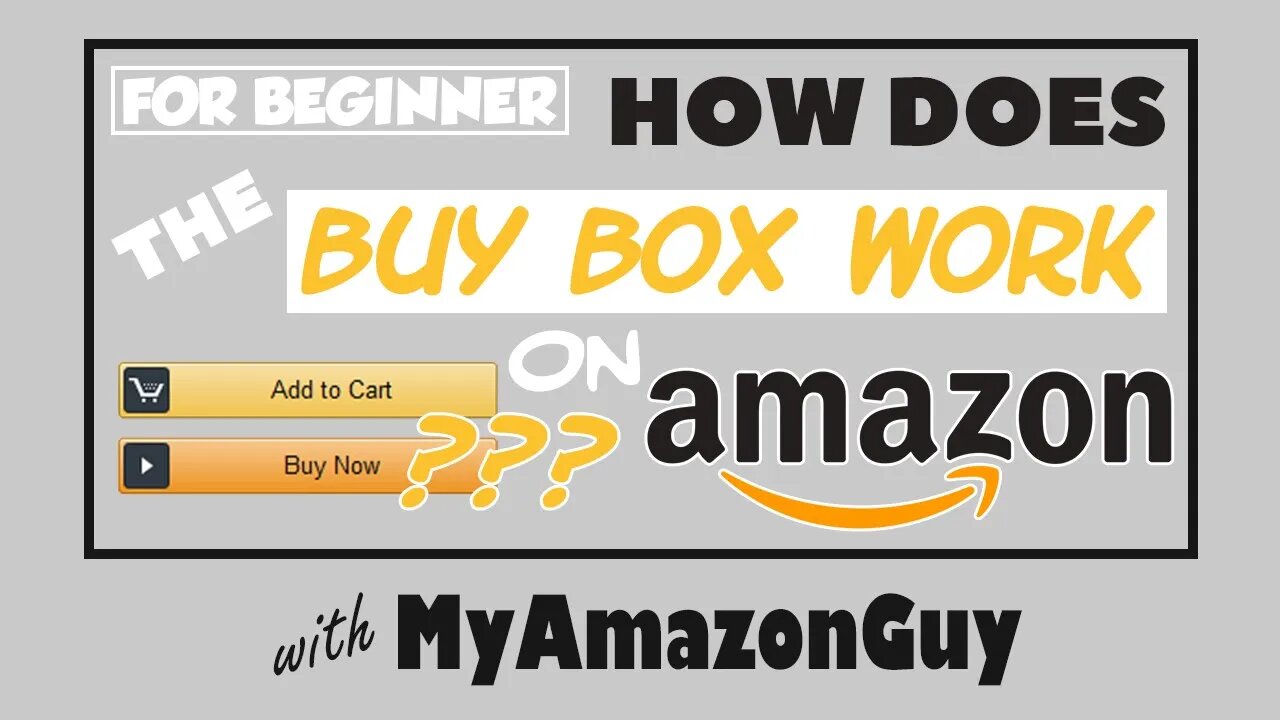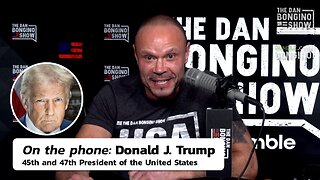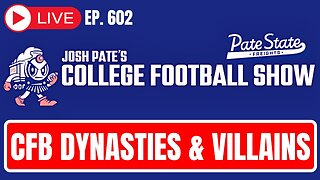Premium Only Content

How Does the Buy Box Work on Amazon (Beginner Tutorial, for Businesses)
How does the Amazon buy box work?
The buy box can make or break your Amazon sales.
When a user clicks the “Add to Cart” button, they’re buying from one merchant and one merchant only: the buy box winner. This is especially crucial now that there’s a “Buy Now” button in addition to the add to cart button — the “Buy Now” button always leads to a purchase from the buy box owner.
Get Amazon Consulting at https://myamazonguy.com/
The Variables that Affect the Buy Box
Once a seller has the ability to compete for the Buy Box, he or she has to learn exactly how to win it. We know that Amazon’s algorithm compares multiple variables of each offering to determine which gives the best overall value to the customer. The weights assigned to each variable can change on a product-by-product or a category-by-category basis, so even though a seller could be losing to a competitor on one product, the same seller could be beating that same competitor on another unrelated product.
There are many variables that Amazon takes into account, which are outlined below. The key is to invest your resources in the ones that make a bigger impact on the Buy Box.
Fulfillment Method:
Sellers who choose FBA (Fulfillment by Amazon) or SFP (Seller-Fulfilled Prime) are usually at an advantage to those who sell FBM (Fulfillment by Merchant), with all other variables being equal.
Landed Price:
This is the total amount that the product is sold for on Amazon. The lower the seller’s performance metrics are compared to other sellers, the lower they’ll need to lower their price to try to win the Buy Box. On the other hand, if their metrics are high, they could raise their price and still win.
Shipping Time:
The quicker you ship, the better off you are.
Availability:
Backordered items can be featured in the Buy Box, but items that are immediately fulfillable are favored by Amazon’s algorithm so avoiding backorders should be a priority for all sellers.
Order Defect Rate:
This is a combination of the Negative Feedback Rate, the A-to-Z Guarantee Claim Rate, and the Service Chargeback Rate.
Valid Tracking Rate:
This is the percentage of deliveries sent with full tracking information.
Late Shipment Rate:
This is the number of orders shipped later than the expected ship date.
On-Time Delivery:
This is the percentage of orders that were delivered on time.
Feedback Score:
How well people have rated you (especially recently) makes a difference.
Customer Response Time:
How quickly do you respond to customers? If you take too much time, it will negatively impact your chances of winning the Buy Box.
Feedback Count:
This is how many people have given you feedback. Obviously the more customers, the better.
Inventory Depth and Sales Volume:
Having enough inventory consistently will put you in a better position than if you have big fluctuations in inventory.
Cancellation and Refund Rate:
If you cancel on a customer who has made an order too often, it could have a negative impact on your seller performance.
Check out our blog post, 5 Expert Tips for Dominating the Amazon Buy Box to Maximize Your Sales Potential - https://myamazonguy.com/5-expert-tips-for-dominating-the-amazon-buy-box/
-
 12:24
12:24
Dan Bongino Show Clips
7 hours agoPresident Trump Full Interview - 01/16/25
91.2K270 -
 LIVE
LIVE
Man in America
7 hours agoBig Pharma's Deadliest Lie is Being EXPOSED to the Masses w/ Jonathan Otto
1,062 watching -
 LIVE
LIVE
Precision Rifle Network
1 day agoS4E2 Guns & Grub - Training Vs. Competition
124 watching -
 LIVE
LIVE
Flyover Conservatives
21 hours agoGarrett Ziegler Breaks Down Special Councilor’s Report on Hunter Biden. Insights for Trump’s Top Picks. | FOC Show
834 watching -
 44:54
44:54
Steve-O's Wild Ride! Podcast
10 hours ago $6.20 earnedMark Wahlberg Threatened To Beat Up Jackass Cast Member - Wild Ride #251
71.1K10 -
 1:13:34
1:13:34
Josh Pate's College Football Show
4 hours ago $0.36 earnedCFB Dynasties & Villains | Marcus Freeman OR Ryan Day | 2025 Sleeper Teams | Cole Cubelic Joins
9.52K -
 1:00:26
1:00:26
The StoneZONE with Roger Stone
2 hours agoSHOCKING NEW TAPE PROVES LBJ KILLED JFK! | The StoneZONE w/ Roger Stone
27.6K9 -
 1:44:33
1:44:33
ObaTheGreat
5 hours agoCrypto vs The World w/ Oba The Great And YaBoySkey
24.6K1 -
 LIVE
LIVE
VOPUSARADIO
2 days agoPOLITI-SHOCK! "COUNTDOWN TO TRUMP" & THE GLOBALISTS BURNING IT ALL DOWN..LITERALLY!
72 watching -
 44:34
44:34
Kimberly Guilfoyle
8 hours agoCountdown to Inauguration Day, Plus California in Crisis, Live with Joel Pollack & Roger Stone | Ep. 189
118K55